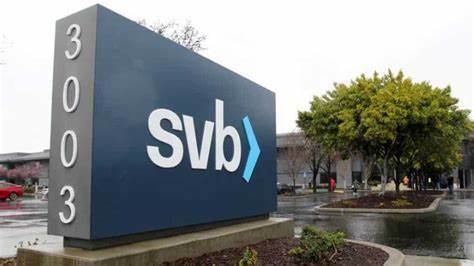What a week it has been Silicon Valley Bank going under, and Credit Suisse apparently teetering on the brink. One thing that might be hard for most Australians to comprehend is that the Americans have one bank for every 70,000 people, compared to our ratio of one bank for every 260,000 people.
While this has led to increased competition between banks and the ability for companies to readily access credit funding expansion. It also means that American banks have lower lending standards due to the increased competition for clients, and slimmer margins contributing to a thinner working capital buffer held by the banks.
Let’s take a closer look at Silicon Valley Bank an institution that focused upon servicing the financing needs of venture capital funded startups that were primarily focused in the technology sector. They were so successful in being seen as the start-up bank, that about half of all venture capital funded start-ups banked with SVB or around 65,000 companies.
Based in Santa Clara, and with about $200 (USD) billion in assets, SVB was the 16th largest bank in America, making it the biggest bank failure since the 2008 Global Financial Crisis. Even our own graphic design company, Canva, had money tied up with SVB.
During the pandemic they achieved rapid deposit growth and invested the capital inflow in long term assets. When short-term interest rates climbed above long-term interest rates, their investment strategy made SVB start haemorrhaging funds.
Warren Buffett summarises it pretty well, “You never know who’s swimming naked until the tide goes out.” Although I always found the mental imagery that accompanies that quote to be unsettling.
Once word got out tech companies took their money out quick smart, pulling the rug out from under the Bank. The Federal Reserve, Treasury and the Federal Deposit Insurance Corporation rushed to take control of SVB and two other crypto focused banks Silvergate Capital and Signature Bank, while simultaneously guaranteeing bank deposits to calm depositors’ fears.
It is always appealing to suggest that banks should be allowed to fail without government intervention, but it is ultimately self-defeating. Indeed, Ray Dalio goes into further depth about this situation in his book ‘Big Debt Crises,’ which I strongly recommend.
The counterpoint is that Banks now have an unwritten guarantee of support from the government, which does little to deter future risk-taking behaviour. Or to use an American expression ‘Main Street is bailing out Wall Street.’ Joe Biden has vowed to do ‘whatever is needed’ to protect the banking system.
What does it mean for us – well it’s too early to tell. If American depositors are reassured that their funds are safe, then we will kick the can down the road further.
If American depositors are not reassured then the American economy will face a credit crunch and, the global economy will hit a wall. Ultimately, the tech sector is likely to experience slower growth because of the collapse of these tech focused banks.
To make the waters even more murky the Fed is now in a position where they are bailing out banks, while they continue to manage inflation through higher inflation rates. Indeed, the US jobs numbers were good which places further pressure on the US Federal Reserve to keep lifting interest rates.
Ultimately, the collapse of several American regional banks increases the likelihood of a US recession. Particularly, if banks continue to tighten lending requirements starving firms of capital and eroding consumer & business confidence.
Either way this will take time to play out.

